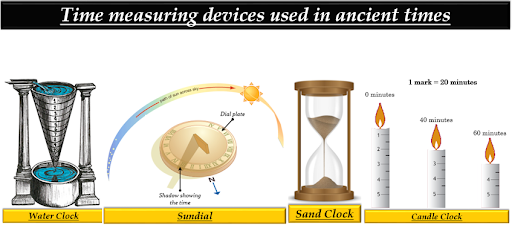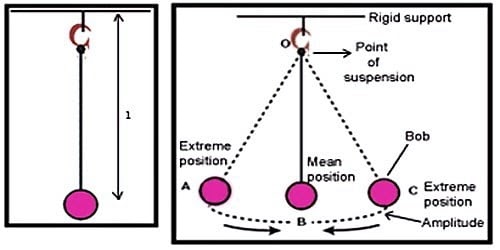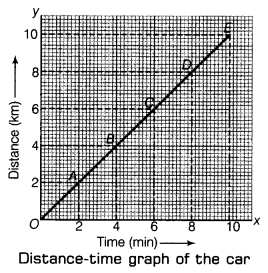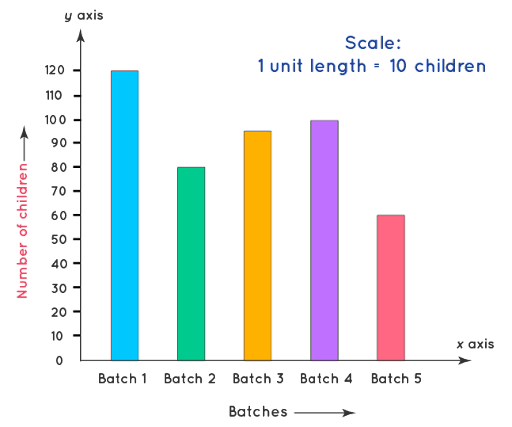MOTION AND TIME for Class 7 SCIENCE
INTRODUCTION
Hamare chapter ka name hai “Motion and Time”, toh iss chapter mein hum motion aur time dono ke baare mein padhenge. Iss chapter mein hum janege ki speed, distance aur time kya hote hai, yeh motion se kaise related hai, hum speed, distance aur time ko kaise measure karte hai, etc. Aur last mein hum distance-time data ka graphical representation karna bhi sikhenge. Ab hum sabse pehle dekhte hai ki motion kya hota hai aur motion ke baare mein kuchh basic things discuss karte hai.
Let’s understand some basic things about motion
Motion
Kisi bhi object ki position ka time ke sath change hona motion kehlata hai. Yeh different types ke hote hai.
Types of Motion
Sabhi objects same type ka motion show nahi karte, woh different type of motions show karte hai. Iske according 4 different type ke motions hote hai.
Rectilinear motion: Agar koi body straight line mein move karti hai toh aise motion ko rectilinear motion kehte hai, e.g. the motion of a train on a straight bridge.
Circular motion: Agar koi body circular path mein move karti hai toh aise motion ko circular motion kaha jata hai, e.g. the motion of a child in a merry-go-round, motion of the earth around the sun in a circular orbit.
Rotational motion: The motion possessed by a body when it spins about a fixed axis, is called rotational motion, e.g. the motion of the earth about its axis, spinning top, the motion of blades of a fan.
Periodic motion: The motion which repeats itself after regular intervals of time, is called periodic motion, e.g. the motion of the swing, to and fro motion of a simple pendulum.
Slow Or Fast
Jab bhi koi body ya vehicle move karta hai uski kuchh speed hoti hai aur woh kuchh distance cover karta hai. Toh jo vehicle ya body ek particular time mein jyada distance cover karti hai uski speed jyada hoti hai aur woh fast hota hai. Lekin jo vehicle ya body same time mein less distance cover kar pati hai uski speed less hoti hai aur woh slow hota hai. Jo bhi body ek particular distance ko cover karne mein shortest time leti hai uski speed sabse jyada hoti hai aur jo bhi body uss distance ko cover karne ke liye sabse jyada time leti hai uski speed sabse slow hoti hai.
Eg- Agar kuchh vehicles ek hi direction mein move kar rahe ho toh hum bata sakte hai ki kounsa vehicle fast move kar raha hai aur kounsa vehicle slow move kar raha hai.
Lekin speed kya hoti hai?
POINT 1
Motion: It is defined as the change of position of an object with respect to time.
Rectilinear motion: The motion possessed by the body moving along a straight line path, is called rectilinear motion.
Circular motion: The motion possessed by a body when it moves along a circular path, is called circular motion.
Rotational motion: The motion possessed by a body when it spins about a fixed axis, is called rotational motion.
Periodic motion: The motion which repeats itself after regular intervals of time, is called periodic motion.
Speed
Ek object ya body ek unit time mein jitna distance cover kar pati hai usko speed kehte hai.
Eg- Agar ek car one hour mein 50 km travel karti hai toh iska matlab uss car ki speed 50 km/hr hai.

Hum speed ko average speed ki tarah bhi use kar sakte hai kyonki bahut rare hi aisa hota hai ki ek body jyada time tak constant speed se move karti ho. Isliye hum ek body ki average speed calculate karte hai.

Speed ko hum generally metre per second (m/s) ya kilometre per hour (km/hr) mein measure karte hai. Lekin iski measurement ki standard unit m/s hai.
Ab koi bhi body ek constant speed par move karti hai ya nahi karti, iske basis par hamne motion ko do parts mein divide kiya hai.
Uniform motion: Agar ek body ek straight line mein constant speed se move karti hai toh uss motion ko hum uniform motion kehte hai. Eg- Straight line motion of a car.
Non-uniform motion: Agar ek body ek straight line par move karte huve apni speed change karti rehti hai ya ek constant speed se move nahi karti toh uss motion ko non- uniform motion kehte hai. Eg- Motion of a train.
Measurement of Time
Ab hum janege ki time kya hota hai aur isko hum kaise measure karte hai.
Time- A duration or moment in which things occur is known as time.
Aaj-kal toh hum clocks aur watches etc. se easily time ka pata laga lete hai lekin kya aapne kabhi socha hai ki jab clocks aur watches nahi thi tab log time ka pata kaise laga paate the?
Uss time par log natural events ki help se time ka pata lagate the. Eg- Sunrise ko morning consider kiya jata tha toh ek sunrise se doosre sunrise ke beech ka time one day consider kiya jata tha, issi tarah ek full moon se doosre full moon ka time one month kehlata tha, earth sun ke around ek revolution complete karne mein jitna time leti thi usko ek year kaha jata tha.
Olden times mein log sundials, water clocks aur sand clocks ke help se bhi time measure karte the.

Kuchh time bad shorter time intervals ko measure karne ke liye simple pendulum, clocks aur watches discover ki gayi. Sabhi devices mein periodic motion ka use kiya gaya, toh hum ab simple pendulum ke motion ke baare mein study karenge.
A Simple pendulum
Simple pendulum mein ek small metallic ball hoti hai jisko hum bob kehte hai, yeh long thread ki help se ek rigid support se iss tarah attached hoti hai taki yeh freely back and forth move kar sake. Niche figure mein hum pendulum ko dekh sakte hai.

Agar hum pendulum ko slightly ek side par le ja kar release karte hai toh yeh to and fro motion mein move karna start kar deta hai. Yeh periodic ya oscillatory motion ka example hai. Hum figure mein dekhe toh pendulum ka ek oscillation tab complete hota hai jab yeh apni mean position O se start karke A ki taraf move karta hai, fir B ki taraf move karta hai aur fir wapas O par aa jata hai.
Bob ko ek oscillation complete karne mein jitna time lagta hai usko hum time period kehte hai.
Aaj-kal clocks aur watches mein ek ya ek se jyada cells wale electric circuit use hote hai jo purani clocks se jyada accurate time btate hai. Inn clocks ko hum quartz clocks kehte hai.
Units of time and speed
Time ko measure karne ki basic ya standard unit second hai jisko hum symbol s se denote karte hai. The larger units of time are minute and hour.
i.e. 1 h = 60 min and 1 min = 60 s
Different units of time are used depending on the need, e.g. in order to express the longer time interval, the bigger units of time are used, i.e. day, month and year.
i.e. 1 day = 24 h, 1 month = 30 days and 1 year = 12 months
Measuring Speed
Hamne upar speed ka formula padha aur hamne time aur distance ko measure karna bhi seekha toh ab hum kisi bhi object ki speed calculate kar sakte hai.
Eg- Ab hum apni aur apne friend ki school jaane ki speed ko compare karenge. Agar hamare home se school tak ka distance 1km hai aur mai uss distance ko 10 min mein cover karta hu aur mera friend uss distance ko 15 min mein cover karta hai, toh kiski speed jyada hai?
Speed= Distance/ Time
1km= 100 m
10 min = 10*60 sec = 600 s
15 min= 15*60 sec = 900 s
My speed= 100/ 600 = 0.16 m/s
Friend’s speed = 100/ 900 = 0.11 m/s
So, i travel faster than my friend.
Let’s know about speed of some objects and organisms.
Rocket and launching satellites = 8 km/s approx.
Tortoise = 8 cm/s approx.
Rabbit = 56 km/h approx.
Snail = 0.05 km/h approx.
Speed aur distance ko measure karne ke liye kuchh devices use kiye jate hai. Yeh vehicles mein bhi fitted hote hai taki hum apni speed aur distance ko monitor kar sake.
Speed measuring device ko hum speedometer kehte hai.
Distance measuring device ko hum odometer kehte hai.

Distance-Time Graph
Distance-time graph draw karke hum kisi bhi object ke motion ko graph par represent kar sakte hai. Yeh ek line-graph hota hai. Ek distance-time graph show karta hai ki ek object jo distance travel karta hai woh time ke sath kaise change hota hai. Ab hum dekhenge ki graph kaise draw kiya jata hai. Iske liye hum pehle kuchh readings lenge jo experimentally note ki gayi hai.
Niche table mein kuchh readings di gayi hai iske according hum graph draw karenge.


Hamne table ke according jo graph banaya hai woh ek straight line graph hai, toh iske according hum keh sakte hai ki car constant speed ya uniform motion mein move kar rahi hai.
Hum newspapers, magazines, etc. mein bhi different type ke graphs dekhte hai jo information ko interesting banane ke liye use kiye jate hai. Usme bar graph, pie charts, line graphs, etc. show kiye jate hai. Line graph ke baare mein toh hamne upar jaan liya hai ab dekhte hai bar graph aur pie charts kya hote hai.
Bar graph
Ek aisa diagram jisme information ko different heights ke thin rectangles ki help se show kiya jata hai usko bar graph kehte hai.

Pie chart
Ek aisa graph jo kisi bhi information ka representation ek circle ke slices ke form mein karta hai.

POINT 2
Speed: The distance travelled by an object per unit time (either in one hour, in one minute or in one second) is known as speed of the object.
Uniform motion: When an object moving along a straight line moves with a constant speed, then the object is said to be in uniform motion.
Non- uniform motion: When an object moving along a straight line changes its speed with respect to time, then the object is said to be in uniform motion.
Time: A duration or moment in which things occur is known as time.
Oscillatory motion: Oscillatory motion is defined as the to and fro motion of an object from its mean position.
Simple pendulum: A simple pendulum can be described as a device where its point mass is attached to a light inextensible string and suspended from a fixed support.
Quartz clock: A quartz clock is a clock that uses an electronic oscillator that is regulated by a quartz crystal to keep time.
Pie chart: A kind of graph or diagram which shows the percentage composition of something in the form of slices of a circle (the whole circle representing 100 per cent), is known as a pie chart.
Bar graph: A diagram which shows information as thin rectangles (known as bars) of different heights is known as a bar graph.
SUMMARY
1. The distance moved by an object in a unit time is called its speed.
2. Speed of objects help us to decide which one is moving faster than the other.
3. The speed of an object is the distance travelled divided by the time taken to cover that distance. Its basic unit is metre per second (m/s).
4. Periodic events are used for the measurement of time. Periodic motion of a pendulum has been used to make clocks and watches.
5. Motion of objects can be presented in pictorial form by their distance-time graphs.
6. The distance-time graph for the motion of an object moving with a constant speed is a straight line.